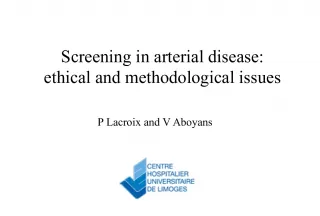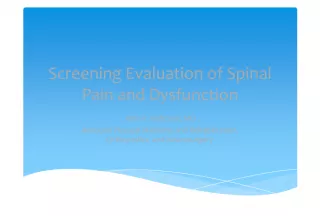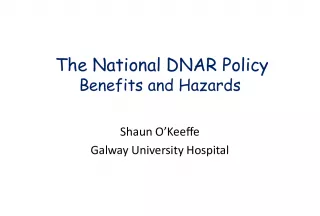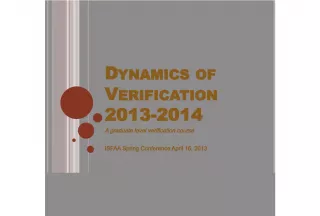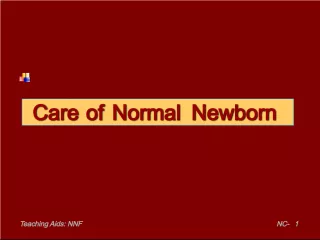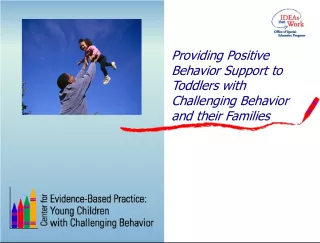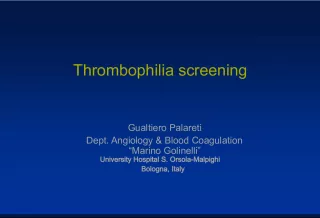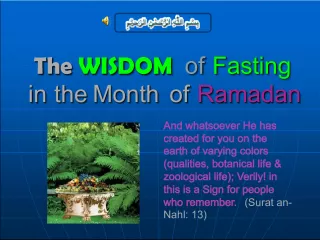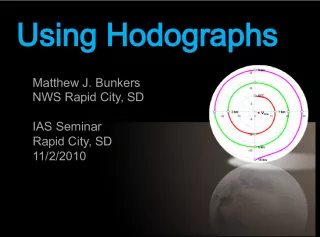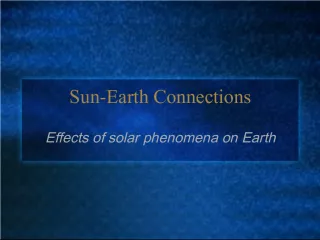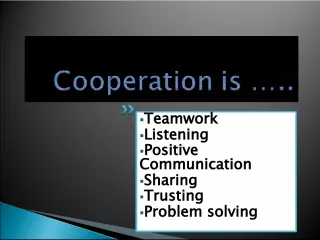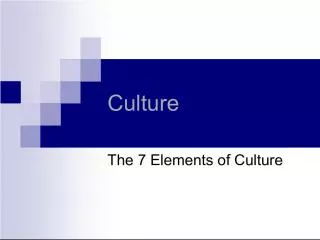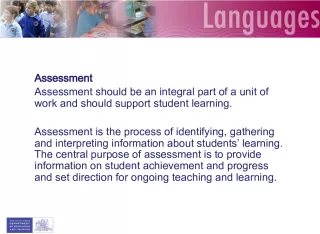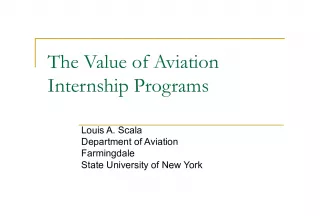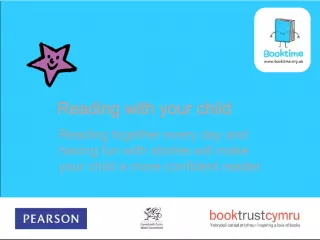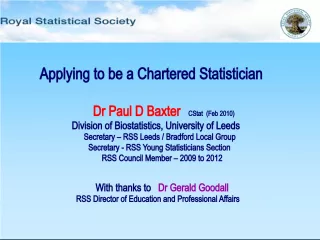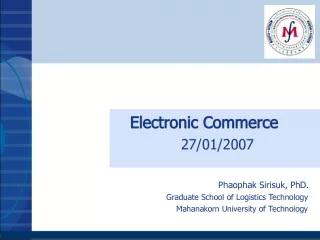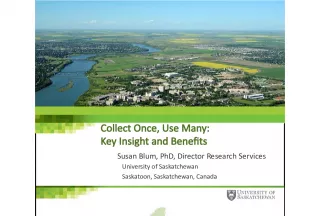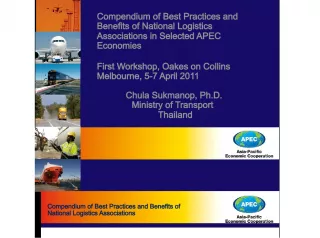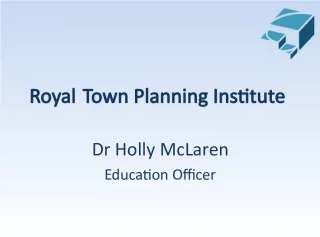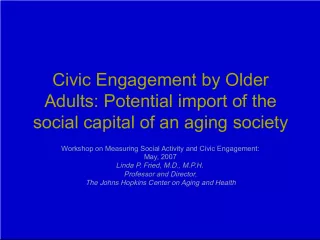Newborn Screening in Indiana: Importance and Benefits


Newborn screening is a mandatory requirement in Indiana, as per Indiana Code 16 41 17, to detect and provide early treatment for various disorders. This program helps to lessen the severity of complications and improve the quality of life for affected babies. Failure to detect and treat screening disorders can lead to severe consequences, including death. The state has established a centralized program to ensure that all infants receive proper screening, diagnosis, and treatment, and that families are provided with genetic counseling and support.
- Uploaded on | 1 Views
-
 doria
doria
About Newborn Screening in Indiana: Importance and Benefits
PowerPoint presentation about 'Newborn Screening in Indiana: Importance and Benefits'. This presentation describes the topic on Newborn screening is a mandatory requirement in Indiana, as per Indiana Code 16 41 17, to detect and provide early treatment for various disorders. This program helps to lessen the severity of complications and improve the quality of life for affected babies. Failure to detect and treat screening disorders can lead to severe consequences, including death. The state has established a centralized program to ensure that all infants receive proper screening, diagnosis, and treatment, and that families are provided with genetic counseling and support.. The key topics included in this slideshow are Newborn screening, Heelstick, Indiana law, Early detection, Treatment, Genetic counseling, Centralized program, Hearing loss, CCHD, Public awareness,. Download this presentation absolutely free.
Presentation Transcript
1. Newborn Screening - Heelstick
2. Required by Indiana law (Indiana Code 16-41-17) Early detection & early treatment of newborn screening disorders: Lessens severity of complications Improves quality of life Lack of early detection & treatment can lead to: Severe mental retardation Inadequate growth & development Death
3. Ensure that every newborn in Indiana receives state-mandated screening for all designated conditions Includes screening for hearing loss Includes pulse oximetry screening for critical congenital heart disease (CCHD) Maintain centralized program to ensure that: Infants who test positive for screened condition(s) receive appropriate diagnosis & treatment Families receive genetic counseling Promote genetic services, public awareness, & education concerning genetic conditions
4. Three Required Screens Heelstick Early Hearing Detection & Intervention (EHDI) Pulse oximetry screening for critical congenital heart disease (CCHD)
6. Collect heelstick specimen per Indiana collection guidelines After 48 hours of age and after 24 hours of protein feed for non-NICU infants Per NICU routine re-screening guidelines for NICU infants For infants who are discharged prior to receiving a valid heelstick OR for any repeat screen: Notify infants parents & PCP that infant will require repeat NBS Notify IU NBS Lab & ISDH if parents cannot be contacted For infants who are born at a facility other than a licensed hospital: Midwife or physician in attendance should refer infant to appropriate facility for NBS Educate parents about importance of NBS Ensure that infants primary care provider (PCP) receives copy of NBS results Maintain NBS log
7. All birthing facilities are required (per Indianas NBS law & its associated legal rules) to maintain a newborn screening log Your facilitys NBS log should include, at a minimum, the following information for each infant: Name Attending physician Medical record number (MRN) Form number (requisition number) of heelstick card sent to IU NBS Lab Date heelstick sample was collected Date heelstick sample was sent to IU NBS Lab Date each infants NBS results were received Results of each infants NBS Name of person who was notified of positive NBS results & date & time of notification
8. Performed on a blood specimen taken from the heel of an infant shortly after birth See next slide for more details on valid heelstick specimens Used to screen for: Cystic fibrosis Endocrine conditions (congenital adrenal hyperplasia & congenital hypothyroidism) Hemoglobinopathies (e.g., sickle cell anemia) Metabolic conditions (e.g., PKU, fatty acid oxidation disorders, biotinidase deficiency)
9. In order for a heelstick specimen to be valid, the specimen must be collected: After the infant is at least 48 hours old AND After the infant has been on protein feeding for at least 24 hours BUT No later than 120 hours after birth For infants who are discharged prior to receiving a valid heelstick screen: Collect a heelstick specimen prior to discharge A second, valid heelstick specimen will need to be collected Notify family that a 2 nd heelstick specimen is required! NOTE: NICU infants have additional routine re-screening guidelines See next slide for more information
10. Type of Testing When to Collect NBS Specimen Routine re-testing (for all NICU patients) 1 st specimen: 0 - 6 days 2 nd specimen: 14 days* 3 rd specimen: 30 days* Monthly thereafter until discharge. * NOTE: If discharge occurs within 6 days of 2 nd or 3 rd specimen, no specimen is required at discharge. TPN or amino acid/carnitine e nhanced formula Follow routine testing guidelines. For Patients Requiring Transfusion Pre-transfusion Collect specimen prior to transfusion. Follow routine re-testing guidelines for additional samples. Post-transfusion Collect prior to 6 days of life. Follow routine re-testing guidelines for additional samples. Collect final specimen 2 - 4 months after final transfusion.
11. Per Indianas newborn screening law: ONLY legal reason parents can refuse any/all portion(s) of newborn screening is if the parent(s) object(s) to the screen based on his/her/their religious beliefs Objection must be made in writing If parent(s) refuse NBS, birthing facility is responsible for: Obtaining a complete, signed religious refusal Sending a copy of religious refusal to ISDH Newborn Screening Program ISDHs Religious Refusal form is available on the NBS Professionals website at http://www.in.gov/isdh/20381.htm NOTE: If your facility has its own NBS refusal form, the form MUST clearly state that parent(s) is/are refusing newborn screening due to his/her/their religious beliefs ISDH cannot accept generic Refusal of Newborn Care or Refusal of Medical Treatment forms
12. NOTE: The following procedures are modified from the heelstick procedures slides provided by the New York State Department of Health
13. Complete all information on blood spot card. Do not contaminate filter paper circles by allowing the circles to come into contact with spillage or by touching before or after blood collection.
16. Equipment: Sterile lancet with tip appropriately 2.0 mm - sterile alcohol prep Sterile gauze pads Soft cloth Blood spot card Gloves
17. Hatched areas (arrows) indicate safe areas for puncture site.
18. Warm site with soft cloth moistened with warm water (up to 41 o C) for 3 to 5 minutes.
19. Cleanse site with alcohol prep. Wipe dry with sterile gauze.
20. Puncture heel. Wipe away first blood drop with sterile gauze pad. Allow another LARGE blood drop to form.
21. Lightly touch filter paper to LARGE blood drop. Allow blood to soak through and completely fill circle with SINGLE application of LARGE blood drop. To enhance blood flow, VERY GENTLY apply intermittent pressure to area surrounding the puncture site). Apply blood to one side of filter paper only.
22. Fill remaining circles in the same manner as step 7, with successive blood drops. If blood flow is diminished, repeat steps 5 through 7. Provide care to the skin puncture site. Note: Use of capillary tubes to collect heel stick specimens is not recommended or included as part of Indianas NBS protocols.
23. Dry blood spots on a dry, clean, flat, non-absorbent surface for a minimum of four (4) hours.
24. Mail completed blood spot card to IU Newborn Screening Lab within 24 hours of collection. NOTE: Heelstick specimens must be received by the IU NBS Lab within 10 days of collection in order to be valid!
25. Be sure to fill ALL required circles! Allow blood to soak through to other side of filter paper. Check both sides of the heelstick card in order to ensure that blood has completely soaked through card. Do not layer successive drops of blood. Avoid touching/smearing blood spots. Extra blood drops can be placed anywhere on heelstick card. However, extra blood drops should not overlap sample circles.
26. Write legibly! Information on the heelstick card is manually entered into a database at the IU NBS Lab for specimen processing & reporting results. Be sure to list the correct physician for infant. Primary care provider name is preferred. Use first AND last name of physician! Use the multiple birth area of the heelstick card correctly. Leave area blank if infant was a single birth. Always designate A, B, etc. if infant was part of a multiple birth (even if children have different names/genders). Do NOT tear off any portion of the heelstick card & staple to a 2 nd heelstick card. Do NOT place tape or labels over the fold-over flap that covers the blood samples.
27. Designate someone at your facility to check heelstick card requisitions before the specimens are sent to IU NBS Lab to ensure they are complete & accurate. Keep the yellow (hospital) copy in your files until you receive the infants NBS results from IU NBS Lab. Some facilities place a specimen label on this copy & reference with the heelstick card requisition number for your records. If an infants NBS results have not been received from IU NBS Lab within one week, please call the IU NBS Lab at (800) 245-9137.
28. Valid specimen (see picture below) Specimen collected when infant 48 hours old & on protein feeding for 24 hours Specimen must be received by IU NBS Lab within 10 days of collection
29. Possible causes Removing filter paper before blood has completely filled circle or before blood has soaked through to second side. Applying blood to filter paper with a capillary tube. Touching filter paper before/after blood specimen collection (with gloved/ungloved hands, lotion, powder, etc.)
30. Possible cause Applying blood with capillary tube or other device.
31. Possible cause Mailing specimen without drying for at least four (4) hours.
32. Possible causes Touching same circle on filter paper to blood drop numerous times. Filling circle on both sides (front & back) of filter paper.
34. NBS Results Required Action(s) Normal Birthing facility should ensure PCP receives copy of NBS results. Presumptive positive IU NBS Lab will notify infants PCP of presumptive positive result. Infants PCP responsible for notifying family of NBS result, collecting repeat blood specimen(s), & submitting repeat blood specimen(s) to IU NBS Lab within 48 hours. If family cannot be contacted and/or repeat blood specimen(s) cannot be collected within 48 hours, notify ISDH NBS Program via phone. Invalid See next slide for more details. NOTES: Follow routine re-testing guidelines for NICU patients. Abnormal results on any specimen (including NICU patients) should be followed as outlined in this chart.
35. Reason for Invalid Screen Actions Early discharge (infant discharged < 48 hours of age and on protein feed < 24 hours) Collect heelstick s pecimen before discharge. Provide family with written notice of need for repeat NBS. Notify ISDH NBS Program immediately by telephone. Repeat NBS specimen must be collected between 48 hours and 5 days of age. If family cannot be reached, and/or repeat heelstick is not obtained by 5 days of age, notify ISDH NBS Program via phone. NOTE: Birthing facilities are responsible for obtaining NBS results for any infants who are transferred to an out-of-state facility. Other invalid screen (e.g., QNS, oversaturated specimen) IU NBS Lab will notify PCP & birthing facility that re-screen is needed. Birthing facility should i mmediately contact PCP & mother via phone. If PCP cannot be reached, and/or repeat screen is not obtained within 3 calendar days , notify ISDH NBS Program via phone.
37. Birthing facilities must submit Monthly Summary Reports (MSRs) to the ISDH NBS Program MSRs include detailed information on any infants who did not receive a valid heelstick screen for one of the following reasons: Infant transferred to another birthing facility before receiving valid initial heelstick NICU Infant died before he/she was eligible for a valid heelstick Parent(s) of infant signed Religious Waiver Infant was discharged home before he/she received a valid heelstick MSRs are due to ISDH by 5 pm EST on 1 st business day after the 14 th of the following month Most MSRs are due to ISDH by 5 pm EST on the 15 th of the following month If the 15 th is on a Saturday/Sunday, MSRs are due to ISDH by 5 pm the following Monday Example: Januarys Heelstick MSR is due to ISDH by 5 pm EST on February 15 th MSRs are submitted to ISDH via the Indiana Newborn Screening Tracking & Education Program (INSTEP) Web-based application (online) Contact ISDH for more information
38. Person to Contact Issue/Question Eileen White, RN, BSN Chief Nurse Consultant (317) 233 - 1379 EWhite1@isdh.IN.gov Patient-specific questions Questions about NBS follow-up Submitting completed, signed Religious Waivers / NBS follow-up information via fax (paper copies) Courtney Eddy, MS, CGC, LGC, MT(ASCP) INSTEP Director (317) 233 - 9260 CEddy@isdh.IN.gov Questions about INSTEP Questions about the NBS law and/or rules All other NBS questions Indiana University Newborn Screening Laboratory (800) 245 - 9137 Requesting NBS brochures Ordering heelstick cards Requesting NBS results
